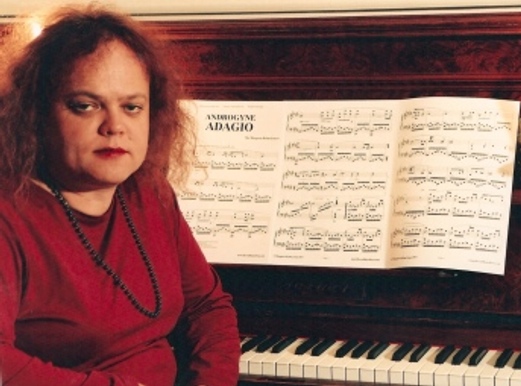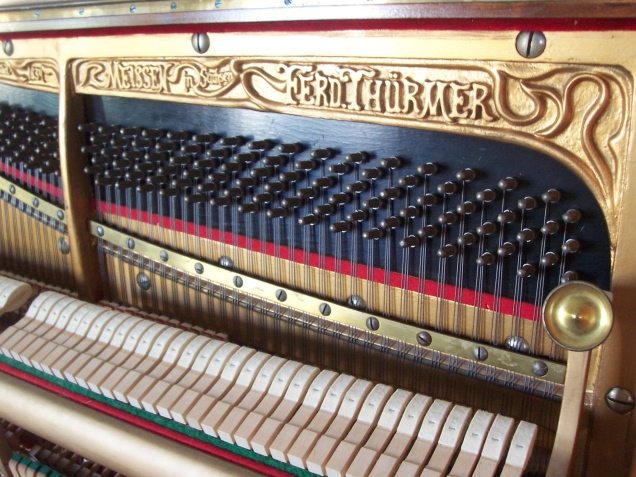
Online Piano Resources
Professional Services
All about Margaret
My sites
PIANO PAGES HOME
SINGING SITE HOME
RESOURCE REVIEWS HOME
Combined Entry Portal
Site List
Mix Margaret Dylan Jones
W.A. composer, pianist,
teacher, article writer, lyricist
for a wide range of musical styles
Musical Styles
Introduction
Years ago I was often asked what musical style I was into. But like many musicians and teachers nowadays, I have broadened my tastes and developed my expertise much more widely.
You can probably tell my main background was originally in classical music, but I branched out considerably from there. As a teacher I've had piano and singing students working on a wide variety of musical and technical styles.
Click on these links to skip ahead:
Singing styles
All singers use the same instrument regardless of the style of their music, and it's the same one they use for speaking. That's why I've always sought to understand the fundamentals so I can apply that knowledge to all types of voices and all types of singing. When I say 'fundamentals' I mean the physiology or anatomy, and the details of how the voice really functions. Click here to read about my unusual experiences in learning about the voice, and a little about the six main singing styles or types of vocal production.
There are many different ways of using the voice. Quite a few of them are healthy and useful for making different kinds of sounds and singing different kinds of songs, especially when you combine various manoeuvres within your vocal instrument.
Vocal styles I've used myself and won awards for include opera, musical theatre, art song/lieder, folksong (classical style) and musical comedy. I've dabbled in non-classical styles such as pop and rock.
I've worked with many hundreds of students singing all of the above plus jazz, country, blues etc. In some cases I help them with stylistic aspects and in others I work exclusively on their technical or vocal health issues.
Piano styles
I play all kinds of pop, rock, blues, country, jazz etc accompaniments for student performers, having learnt all about modern chords and their uses from private study over many years.
A common perception is that non-classical musicians play with more 'feeling,' but for me that is not really true. For me it's just a different kind of feeling, or I'm feeling something completely different. Improvising over a blues progression is more elemental, but when I play Brahms it's simultaneously very emotional and very intellectual, at least for me. The two experiences are quite different and I can understand why some musicians can't get into both because you almost have to be a different person to play the other type of music. See below for more about the differences between classical and non-classical.
Again, my intial background in piano was classical, for want of a better word. Lifelong favourites include Bach, Beethoven, Chopin, Brahms, Ravel, and, to a lesser extent, Mozart, Schubert and Debussy. And I get a big buzz playing my own piano compositions (it would be sad if I didn't, no?)
One piece that I adore playing, er, no; stumbling through, is Stephen Benfall's major work Hammers (1990), which I published via Hovea Music Press. The colours from the chords and textures in this difficult work are just extraordinary.
Avant-garde, new, modern, art, experimental or contemporary music
All through the 1980s and into the 1990s I was keenly interested and involved in what we used to call avant-garde, new, modern (ie early twentieth century), contemporary, experimental or even 'art,' music. After a while some of these terms became appropriated by the popular music press so that they now refer to various kinds of popular music, thus causing some confusion.
There are many problems with using words to describe or label music, and it is just about impossible to define major terms like 'classical' or 'popular.' To be clear, in this section I'm refering to music that usually has a very small audience. You may call it elitist, but it's not elitist because it's open for anyone to enjoy.
Tonight's Ensemble
This was a totally "free improvisation" group that rehearsed at my then home in Claremont, and performed at a new music festival in the Fremantle Art Gallery, sometime around 1990. Members included myself (piano), Lindsay Vickery (clarinet), Peter Hadley (flute), Stephen Benfall (clarinet & saxophone), Mark Cain (saxophone), and Tim Chambers (guitar). We made a lot of different sounds with those instruments, playing them in all sorts of unconventional ways.
Latin american
In Sydney in the early 1980s I palyed Fender Rhodes electric piano in a working band called Salsation. We played Salsa dance music, of course. The piano parts had distinctive right-hand montuno figures, probably derived from Cuban mountain music, which are also used by Chick Corea. Incidentally, I played the latter's Where Have I Known You Before for my university audition.
Jazz piano
My most jazzy piece is The Prayer Of The Swinging Mantis, currently in the AMEB's piano exam book for Preliminary Grade (Australian Piano anthology).
Compositions
I compose very slowly, with each new work usually taking a long gestation time before I even start writing it. And once I've started putting pen to paper it can take a long time and a lot of revising before I consider a work finished.
Among my small output I have a number of pieces that I'm very proud of, each for a different reason. Some I like because they are so good for the educational purpose I intended for them, others because they say something important so clearly and musically.
Each time I start to compose I have to consider the musical style or technique I will employ, as well as defining my intention.
For example, all the pieces in my educational piano suite, Child's Play, are built from the same 12-note or dodecaphonic note-row. They start very easy, really pre-preliminary level, and get progressively harder until they reach an intermediate difficulty level. It's not everyone's cup of tea, but I really enjoy these clever pieces for how musical they are.
My Sonatina, by way of contrast, was composed almost intuitively and is more neo-tonal than atonal, though it plays on both concepts and like Child's Play, makes free use of rhythm, dissonance, colour and texture. You can't miss the drama, the nightmarish anxiety and the sense of peaceful resolution. Like all my music, the overall shape or form is very clear.
The Androgyne Adagio, composed when I was 15 and 16, is probably my best work. It is much more sophisticated than I remember being at that time. Of course, it's actually not as slow as a real adagio, but I wanted a better title when I re-named it many years latter. I was inspired by Beethoven's Moonlight Sonata, and the musical style is only a little more recent than that. Everyone likes this right from the first bar.
Read more about my compositions and see a bigger list here.
What's the difference between classical and non-classical?
Eveyone seems to know what is classical and what is non-classical, but no-one can provide good definitions. So, it must have something to do with how people experience their favourite music, and that's without even getting into the myriad problems of labelling and terminology. (Hmm, this sounds familiar...a lot like the impossibility of defining male or female, and trying to avoid offending people who are particularly attached to one of dozens of gender terms and have their own interpretation of what it means, but that's another story.)
I will merely offer this general observation from the practical point of view of an accompanist. In classical music, I follow the rhythm and tempo variations of the soloist, a singer, for example. In non-classical, the band plays (that's me), and the singer sings over it, singing some notes early and some late for a deliberate effect. So it's quite the opposite.
Mobile phone: 0414 374 701.
(Outside Australia: +61 414374701).
Email: see my contact page.

Online Vocal Resources
Professional Services
All about Margaret
My sites
PIANO PAGES HOME
SINGING SITE HOME
RESOURCE REVIEWS HOME
Combined Entry Portal
Site List